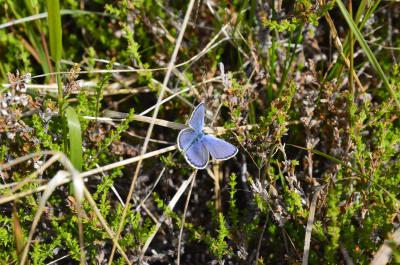Introduction

Historical land use and connectivity have been shown to affect the biodiversity of today. Animals and plants are able to persist in a landscape suffering from habitat destruction and fragmentation during certain circumstances. However, this retention is not everlasting.
Butterflies have declined in all of Europe, including Sweden, during the latter half of the 20th century. Today, butterfly conservation is mainly focused on species rich habitats. However, there is a need to increase connectivity in the landscape and to include secondary habitats in conservation strategies.
Today, roughly 83 % of the forests in Sweden are comprised of production forestry. That is a total of 23 out of 28 million hectares. If you compare the amount of timber produced today with the amount fromthe 1920s, it has increased with as much as 95 %. Today, clear-cuts are the most influencing factor impacting the landscape in Sweden.
There is a need for improvement of habitat quality and connectivity in fragmented landscapes. Current conservation regimes focusing on already species rich habitats does not seem to be enough to preserve threatened species. A greater effort towards exploring and utilizing potential habitats in the matrix, such as clear-cuts, must be made in order to increase the amount of habitats as well as decreasing fragmentation. This, in combination with the knowledge of historical land use and its impact on the biodiversity of today, can be used in policy making for both production forestry regimes and biodiversity conservation.
Aim of the study
The aim of this study was to investigate the potential effects of historical land use and time since clear-cutting on butterfly assemblages in production forestry clear-cuts.
Responsible for this page:
Director of undergraduate studies Biology
Last updated:
05/28/14
